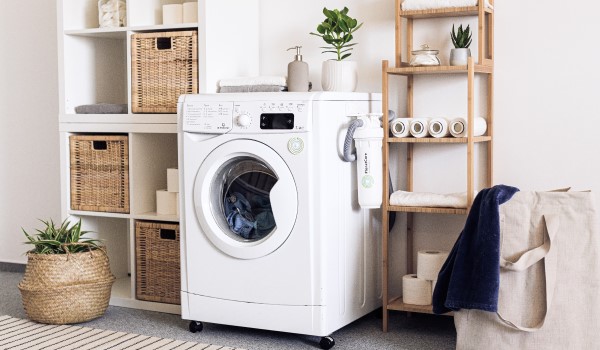Choose the right savings account for you
There are lots of different types of savings accounts. So many, in fact, that it can be tricky to decide which is right for you. Which savings account you should go for depends on how often you can put money away, whether or not you’ll need access to your money, and your ultimate savings goals. Here’s a quick overview of the main types of savings accounts at Beehive Money and why you might find them useful.
What are the different types of savings accounts?
While there are lots of different kinds of savings accounts, all with slightly different terms and purposes, these are some of the most popular. We’ll take you through each of them in turn:
- Cash ISAs
- Lifetime ISAs
- Instant access savings accounts
- Easy access savings accounts
- Limited access or notice savings accounts
- Fixed rate savings accounts
- Regular savings accounts.
Cash ISA
ISAs are tax-free savings accounts, which means you won’t have to pay tax on the interest you earn and it doesn’t count towards your Personal Savings Allowance. You can only open ISAs in your own name (you can’t open joint ISAs) as these are Individual Savings Accounts and you can only pay up to £20,000 into all of your cash ISAs each tax year.
Otherwise, a Cash ISA is very similar to your typical savings account, and you can open one from the age of 16. There are different types of Cash ISAs with different rates and levels of access too, so how much you can save and how easy it’ll be to take out money depends on the terms of your account.
Why choose a Cash ISA?
- Tax free interest: The interest you earn on the money in your Cash ISA doesn’t count towards your Personal Savings Allowance. So, you won’t have to pay tax on your interest.
- Eligibility: Any UK resident can open a Cash ISA from the age of 16.
- Moving money: Once you open a Cash ISA, you don’t have to stay with the same provider forever. You can move money you’ve saved in previous tax years into a new ISA without having to pay tax, and you can switch ISAs whenever you want, depending on the terms and conditions of your particular account.
Things to know about the Cash ISA
- One per year: You can only open one new Cash ISA during the tax year, however over time you can have and fund multiple ISAs.
- Remember, you can only pay into one of each type of ISA per tax year. For example you can pay into a Cash ISA, Junior ISA and a Lifetime ISA in the same tax year as long as you don’t go over your annual allowance.
- Annual allowance: Currently, the yearly ISA limit is £20,000. That means you can’t deposit any more than £20,000 across all your ISA accounts – not just your Cash ISA – in one tax year.
- Withdrawal restrictions: If a Cash ISA isn’t ‘flexible’, taking money out and replacing it later that tax year will count towards your ISA allowance. So if you’d already deposited £15,000, took out £1,000, and then put it back, you’d have spent £16,000 of your limit.
- Switching penalties: If you decide to switch providers, you might have to pay a charge or lose out on interest. Check the terms and conditions of the Cash ISA you’re considering before you apply, just in case.
Think a Cash ISA might be for you? Take a look at our savings accounts.
Lifetime ISA
A Lifetime ISA or LISA (pronounced lie-sa) is a tax-free savings account and Government scheme designed to help you save for two of life’s big milestones: your first home and/or retirement.
It works like this. For every £4 you save – up to an annual total of £4,000 – you’ll get £1 from the Government. That means you could earn up to £1,000 every year until you turn 50. And that’s not including the interest on top, which you won’t have to pay tax on either. Then, you can use the money you save on your first home deposit, or to help fund your retirement when you turn 60.
Why choose a Lifetime ISA?
- Milestone saving: You can use the LISA to buy your first home and/or to help fund your retirement when you turn 60. You can put money aside and earn bonuses until you turn 50, and it’ll keep earning interest after that.
- Government bonus: With the free 25% Government bonus, you could earn up to £1,000 each year.
- Plus interest: Don’t forget the interest on top – as it’s an ISA, you won’t have to pay tax on the interest you earn.
- Big potential returns: If you open an account at 18 and save the maximum amount every year until you turn 50, you could save £128,000 and earn £32,000 in bonuses on top. Plus compound interest, too.
Things to know about Lifetime ISAs
- Eligibility: Lifetime ISAs are only open to people aged 18 to 39, and your account has to be at least 12 months old before you can use it to buy a home without having to pay a 25% withdrawal charge. You can’t use it to buy a home if you’ve owned or inherited one before, anywhere in the world, or owned a share of a property. There are few other restrictions to keep in mind, which you can read about here.
- LISA limit: You can only put up to £4,000 a year in your LISA, and it counts towards your yearly tax-free £20,000 allowance.
- Save until 50: Until you turn 50, you can keep putting money in your LISA and earning Government bonuses. After that, your savings will continue earning interest, as long as you keep funds in the account.
- Restricted access: If you take money out of your LISA for pretty much anything other than retirement or your first home, you’ll have to pay a 25% Government penalty, which could mean you get back less than you put in.
A Lifetime ISA can be a great way to get on the property ladder or help fund your retirement. Read about the Beehive Lifetime ISA to see whether it’s right for you.
Instant access savings accounts
Easy access savings accounts
Easy access accounts are just what they sound like: savings accounts that give you quick and easy access to your money. If you need to dip into your easy access savings pot, you won’t have to give notice or pay a penalty. Just withdraw it from your account through the app or website.- Flexibility: With this type of savings account, you can take out money whenever you need it. So, if you know you’ll need to dip into your savings from time to time, easy access might be the account for you.
- Online only: Easy access savings accounts are digital only, so you’ll need to be comfortable with managing your money online. That shouldn’t be a problem if you’re saving with Beehive.
- Lower interest: Usually, accounts like these won’t pay as much interest as those with more restricted access. If you’re looking for higher interest rates and won’t need easy access to your savings, you might consider a fixed rate, limited access or notice savings account instead.
- PSA: With these accounts, any interest earnt will contribute towards your Personal Savings Allowance.
Limited access or notice savings accounts
Can you plan your withdrawals ahead of when you need your money? If so, a limited access or notice savings account might work for you.Why choose a limited access or notice savings account?
- Resist temptation: If you want to put money to one side without touching it, this kind of account can help. You won’t be able to dip into your pot whenever you feel like it.
- Higher interest: As an incentive to leave your money alone, accounts like these tend to have higher interest rates than easy access savings accounts.
- Limited access: It’s all in the name – with these types of accounts you won’t be able to access your money at short notice, or very often. If you’re not in the position to lock your money away, these probably aren’t the right accounts for you.
Fixed rate savings accounts
The ‘fixed rate’ refers to the interest rate, which will stay the same until a specific date. So, if you can afford to leave your savings pot untouched for longer, you could make more of your money with this type of account.Keep in mind, though, that you won’t have easy access to your money – and if you absolutely must make a withdrawal during the fixed rate term, you’re likely to have to pay a penalty and we currently don’t allow withdrawals from our Beehive Money fixed rate accounts.
Why choose this savings account?
- Higher interest: Accounts like these tend to earn higher interest than easy access savings accounts, and usually the interest will increase the longer the term.
- Guaranteed return: The interest rate will be fixed from the moment you open your account, so you’ll always know exactly how much you could earn.
- Resist temptation: With fixed rate accounts they’re ‘locked away’ so you can’t touch them without a penalty for the term of the account and you won’t be tempted to spend it!
- Fluctuating difference: The difference in interest between these and general savings accounts isn’t guaranteed. While general interest rates can fall, they can also rise above your fixed rate during the term of your account.
- ISA limitations: for fixed rate ISAs, all the usual ISA allowance and limitations apply too.
- Restricted access: With these types of accounts if you’re allowed to, you’ll have to pay a penalty if you want to take money out of your pot. If you think you’ll need to dip into your savings now and then, this account probably isn’t right for you.
Regular savings accounts
A regular savings account is as simple as it sounds: somewhere to put money aside regularly. It’s designed to help you get into the habit of saving, even if it’s just a little bit each month.Why choose a regular savings account?
- Higher interest rates: Regular savings accounts tend to offer higher rates than others, which is great if you can leave your money alone.
- Get into the habit: Need a little nudge in the right direction? Accounts like these can encourage you to save money every single month as you usually have to make a monthly deposit in order to keep the account open.
- Limited deposits and withdrawals: Usually, you can put between £100 and £500 each month into a regular savings account – and there might be limits on how much you can take out, or how often and penalties when you do.
- Gradual savings: The point of a regular savings account is to save little and often, which means you’ll build up your savings and interest over time.
Choosing a savings account
With so many savings accounts to choose from, where do you go from here? Well, to try and help you decide we’ve outlined some information below for different needs and situations.Best savings accounts for 18-year old's
If you’re 18 or older, you can open any Beehive Money savings account. Which one is best depends on what you’re saving for, though our Lifetime ISA is great if you’re planning ahead; you could earn up to £32,000 in Government bonuses by the time you turn 50.
Best savings accounts for couples
Saving for your first home? You could each open a Lifetime ISA if you’re both under 39 and haven’t owned property before. If only one of you is a first-time buyer, that person can still open a Lifetime ISA to earn those Government bonuses.
If you’re putting money aside for a wedding, holiday, or house move that isn’t your first home, we’ve lots of other accounts to choose from. You might think about a regular saver, for example, which you can save into more regularly with a higher interest rate.
Best savings accounts for house deposits
For first-time buyers, that’s right: it’s the Lifetime ISA. Those aged 18 to 39 can save up to £4,000 a year and earn up to £1,000 in annual Government bonuses on top, which can supercharge your savings and help you reach your goal faster. If you’re not a first-time buyer, a Cash ISA with a fixed term interest rate could be a great option too. Because the interest rate is fixed, you’ll be able to get a much clearer picture of how much money you could save – and how much interest you could earn – by the end of your fixed term, which makes it easier to work out what you can afford.
Best savings accounts for pensioners
Whatever you’re saving for, a regular saver could be a great account if you’re over 60. The small, monthly deposits add up over time, and you’ll benefit from a pretty good interest rate too. If you want to be able to dip into your money when you need it, you might also think about an easy access account.
Best savings accounts for a lump sum
Want to put a big sum of money somewhere safe? Think about a fixed rate account. You’ll be able to see clearly how much interest you could earn by the end of the term, and withdrawal penalties mean you won’t be tempted to take money out of your pot. If you’ll need to make withdrawals now and then, an easy access ISA might work too – though how much you can deposit depends on what’s left of your tax-free allowance.
What’s next?
We know this is a lot to take in. There’s so much to learn, but it’s never too late to start. Head back to our help centre for more articles about saving, and if you need any more advice or info to make your choice, speak to a financial adviser.Reviewing your savings
We always want the best for our members, which is why we recommend that you should regularly review any savings you have; either with us or elsewhere. Ensure that you're still getting competitive rates (where you aren't locked into a fixed term product) and that your accounts continue to help you reach your savings goals.
See our full range of savings accounts, compare interest rates and find the right product for you.
See our savings products








